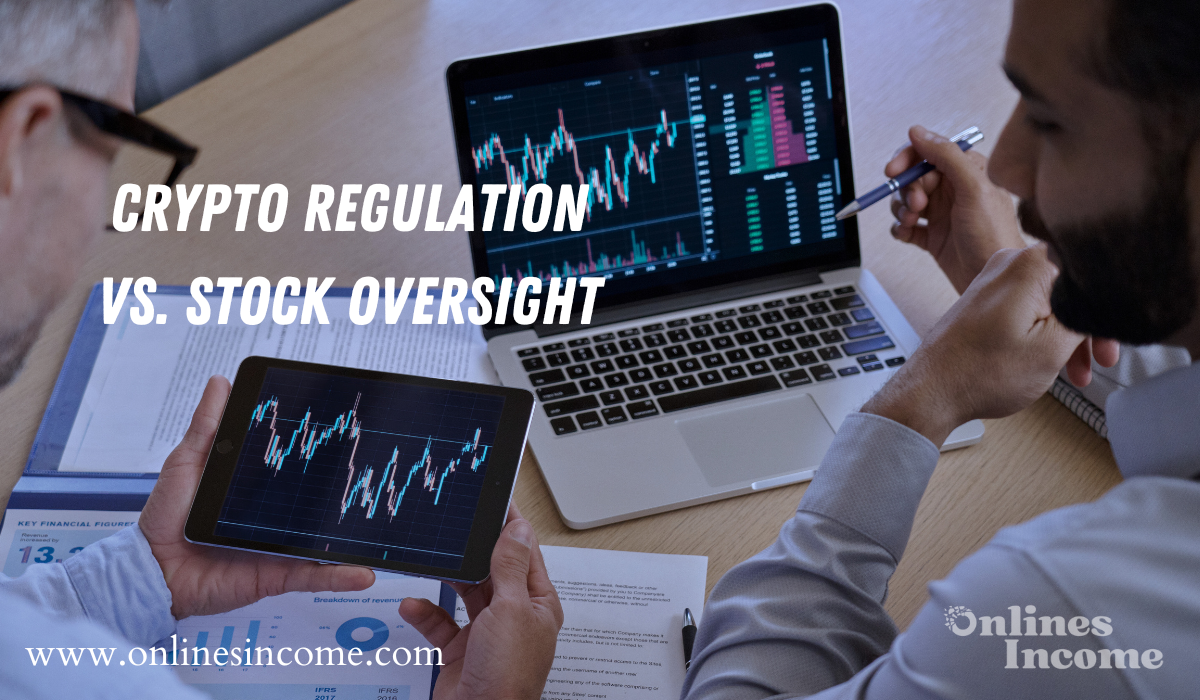In the ever-evolving landscape of finance, the intersections between crypto regulation and traditional stock oversight have become focal points of discussion. Understanding the parallels and distinctions between these two realms is crucial for investors, policymakers, and financial enthusiasts alike. In this comprehensive article, we delve into the intricate details of crypto regulation and stock oversight, unraveling the nuances that set them apart and bring them together.

The Regulatory Landscape
Crypto Regulation
Cryptocurrencies, led by the pioneering Bitcoin, have emerged as a disruptive force in the financial world. The decentralized nature of cryptocurrencies raises unique challenges for regulatory bodies. Governments worldwide are grappling with crafting effective frameworks to govern digital assets, ensuring investor protection, and mitigating potential risks.
Blockchain technology, the backbone of most cryptocurrencies, adds an extra layer of complexity. While it ensures transparency and security, it also poses challenges for regulators who must strike a balance between innovation and safeguarding financial systems.
Stock Oversight
On the other side of the financial spectrum, traditional stock markets operate within well-established regulatory frameworks. Oversight agencies, such as the Securities and Exchange Commission (SEC) in the United States, play a pivotal role in ensuring fair practices, market integrity, and investor protection.
Listing requirements, disclosure regulations, and stringent reporting standards characterize the oversight of stock markets. Companies aiming to go public must adhere to a set of rules designed to maintain the integrity and credibility of the stock exchange.
Investor Protection
Crypto Landscape
Investor protection in the crypto space is a dynamic challenge. The pseudonymous nature of transactions and the absence of a central authority make it imperative to establish robust safeguards. Regulatory efforts focus on combating fraud, ensuring secure custody solutions, and promoting transparency in token offerings.
Investors in the crypto market need to exercise heightened due diligence, as the decentralized nature means fewer recourse options in case of malfeasance.
Stock Markets
In contrast, traditional stock markets prioritize investor protection through a combination of regulatory oversight and market surveillance. Stringent reporting requirements compel publicly traded companies to disclose financial information regularly, providing investors with a comprehensive view of the company’s performance.
The existence of regulatory bodies with the authority to enforce compliance acts as a deterrent against fraudulent activities, bolstering investor confidence.
Market Volatility and Risk Management
Crypto Volatility
Cryptocurrencies are notorious for their price volatility. While this volatility presents lucrative opportunities, it also exposes investors to significant risks. Regulatory frameworks in the crypto space aim to address market manipulation, pump-and-dump schemes, and other activities that can contribute to excessive price swings.
Risk management strategies, such as portfolio diversification and thorough research, become paramount in navigating the crypto market’s inherent unpredictability.
Stock Market Stability
Traditional stock markets, while not immune to volatility, generally exhibit a more stable trajectory. The presence of circuit breakers, trading halts, and regulatory intervention during extreme market conditions helps maintain stability and prevents drastic price fluctuations.
Investors in traditional stocks often rely on historical performance data and established risk metrics to make informed decisions.
Transparency and Governance
Decentralized Transparency
Blockchain technology, the backbone of cryptocurrencies, inherently promotes transparency. Transactions recorded on a blockchain are immutable and accessible to all network participants. This transparency, coupled with smart contract capabilities, enhances accountability in the crypto space.
However, the challenge lies in balancing transparency with the privacy expectations of users, a delicate equilibrium regulators strive to achieve.
Regulatory Governance
Stock markets operate within a centralized governance structure. Regulatory bodies set the rules, monitor compliance, and enforce penalties for violations. The transparency in traditional stock markets comes from regulatory oversight, periodic audits, and the mandatory disclosure of material information.
While centralized governance ensures a degree of control, it also raises questions about the susceptibility to external influences.
Conclusion
In the dynamic landscape of finance, the parallels between crypto regulation and stock oversight reveal fascinating intersections and disparities. Investors navigating these realms must be attuned to the distinct challenges and opportunities each presents. As governments worldwide continue to adapt regulatory frameworks, staying informed and embracing a nuanced approach to investment becomes paramount.
